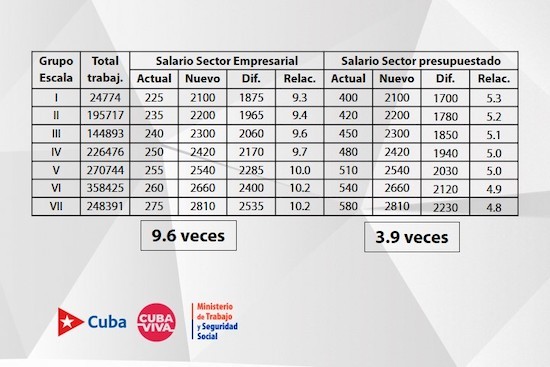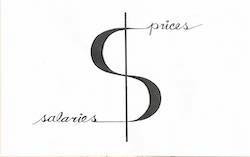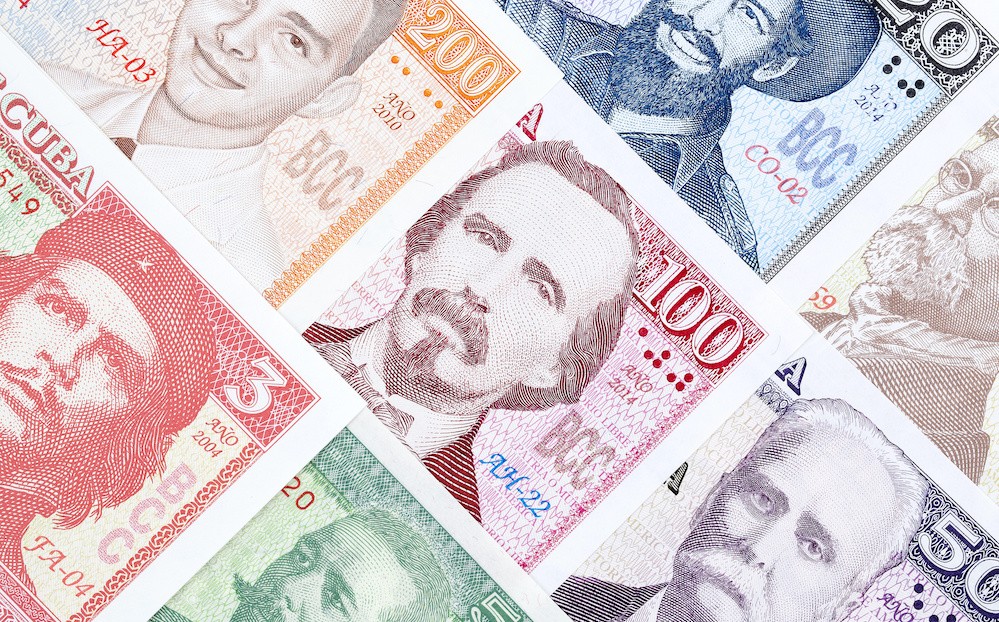Currency and Exchange Unification in Cuba: Regulations, Effects, and Perspectives (Part I)
The Cuban government has begun necessary currency and exchange rate unifications, but has postponed several of its key elements for at least a year. This will delay its long-term positive effects but will not prevent short-term shocks such as inflation.
By Carmelo Mesa-Lago, Distinguished Professor Emeritus of Economics and Latin American Studies, University of Pittsburgh
This article summarizes the study recently published by the Elcano Institute for International Studies in Madrid.
Since 1994, Cuba has had two currencies: the “national peso” (CUP) and the “convertible peso” (CUC). This is an analysis of the legal regulations and their effects.
There are several exchange rates in Cuba. In the state enterprise sector, the CUP is exchanged at the same rate as the CUC (1 CUP = 1 CUC = 1 US dollar), but for the general population the exchange rate is 1 CUC = 24 CUP. There are also other exchange rates.
The dual currency system, the various exchange rates, and the partial reintroduction of the US dollar in 2019 all have negative effects, such as price distortions, incentives to imports, and disincentives to exports. Furthermore, the population is paid largely in CUP, but they must buy many goods and services in CUC. There is also low labor productivity in state companies, which receive costly tax subsidies when they suffer losses.
On January 1, 2021, the Cuban government began a currency unification process called “Monetary Ordering.”
Unification Regulations
Previously, the exchange rate in the business sector was 1 CUP per dollar; now it is 24 CUP per dollar, but the rates will vary as they fluctuate in the international market. Neither the government nor the experts know what the real exchange rate is, because the CUP is not traded on the international market, and the CUP is certainly overvalued: at the end of 2020 it was exchanged on the black market between 1.50 and 1.80 per dollar, that is, from 36 to 43 CUP. The government decided to adopt the fixed exchange rate to control the increase in wholesale prices and inflation. Only when the economic situation improves will it be possible to switch to a fluctuating exchange rate, but this will imply future devaluations. Ideally, the exchange rate would have been set higher than 24 and then gradually adjusted downward as the economy recovers.
For years, the government assured the population that their CUC would be guaranteed, but this promise has not been completely fulfilled. There is a six-month period to exchange each CUC for 24 CUP, except for non-state sector workers with bank accounts in CUC, for whom the exchange was made automatically. Workers abroad who have bank accounts in a foreign currency in Cuba receive a “certificate of deposit,” but they are not able to cash their money in foreign currency because the economy lacks liquidity. If they wish to withdraw the deposit, they are paid in CUP, their account is effectively decommissioned, and there is no guarantee that they will be paid in foreign currency in the future—they will have to put in a request at the bank “to see if there are available hard currency for sale." Nor is it possible to buy dollars or euros with CUP, because foreign currency is not available. People who receive dollars from abroad can deposit them in their accounts, but withdrawals must be made in CUP, not in dollars or other currencies.
Subsidies to State Enterprises
Ideally, the government should have shuttered the enterprises operating at a loss and ended the fiscal subsidies, but it decided to maintain them for a one-year transition period. To do so, it created a reserve of 18 billion CUP in 2021 (which contributes to the increase in the fiscal deficit) in order to help companies; these must make “commitments” to reduce their losses and improve their competitiveness. What will happen if, after the transition year, the state-owned enterprises fail to fulfill these commitments and continue with losses, has not been announced. Temporary subsidies tend to become permanent. Therefore, there may be another transition period for strategic enterprises that the government wants to protect, in which case the positive effects of the unification will not materialize in the long term.
The minimum wage, pensions, and social assistance benefits have been adjusted based on the cost of a basket of goods and services estimated by the government at 1,528 CUP per month, which includes food, clothing, electricity, public transportation, cleaning and personal hygiene products, medicines, and home repair/maintenance. This value appears low given the increases that have already occurred in prices of food and other essential consumer goods and services. The minimum wage for state workers is set at 2,100 CUP per month, a five-fold increase over the previous minimum wage and 572 CUP higher than the value of the basket, but workers must pay a social security contribution of 105 CUP, which leaves 467 CUP to cover all other needs.

Within the state sector, the “enterprise” sector salaries have increased by an average of almost 10 times, but in the “budgeted”[1] sector, by less than four times. The difference is due to the fact that the latter workers received a salary increase of 37% in 2019; but even so, the cumulative increase due to the unification is lower. Furthermore, in the enterprise sector, besides the fixed salary and additional payments based on educational level, there is a variable element that includes piecework wages and the distribution of company profits. These changes suggest a greater integration of the wage system and an interrelation between worker productivity and wages, which are both positive although they discriminate against the budgeted sector (including those who work in social services).
In the enterprise sector, companies will set new prices that will include the effect of the devaluation plus the cost of the wage increases, and there will be a significant increase in wholesale prices that will be transferred to retail prices. In the budgeted sector, salary increases must be paid from the national budget. Therefore, whether through prices or monetary emission, inflation will increase.
Wages in the non-state sector will be set freely according to supply and demand. Prices are forecast to rise because if wholesale prices rise, the cost of inputs and the price of services will increase so as not to decrease profits. Municipal governments “may decide on” pricing with the non-state sector, which portend conflicts of interest.
Adjustment of Pensions and Social Assistance Benefits
The minimum monthly pension of 280 CUP was increased five-fold to almost the value of the basic basket of 1,528 CUP. The pensions of non-state workers who contribute less than the 5% paid by state workers is 1,118 CUP; officially, this is said to guarantee the cost of the basic basket, but it is actually 26% lower. The minimum social assistance benefit is 1,260 CUP, equivalent to 67% of the minimum salary, but it increases by 800 CUP for each additional person in the household. Several of these increases appear to be generous, but they depend on two factors: whether the value of the basic basket corresponds to reality, and whether pensions and social assistance benefits will maintain their real values in the face of inflation, something that has not occurred in 30 years.
Price Increases
The prices of imported items will be 24 times higher and therefore more expensive, which will discourage imports. The prices of domestic products will not increase more than imported products; they will increase 12 times (rather than 24). This is because price caps will be imposed to control inflation on 42 wholesale products and services deemed to have a “high impact on the population,” such as fuel, steel, cement, sugar, honey, and water. The finance minister said that “prices must give market signals to producers, service providers, and the final vendor or retailer.” The state-set prices of compulsory selling of harvest products by farmers to the government (acopio) will also increase: black beans by 34%, rice by 56%, pork by 88%, eggs by 235%, and potatoes by 295%. The prices of 30 agricultural products will be determined centrally, as will the rationed prices; the rest will be set by agreements between producers and buyers.

This will require temporarily maintaining fiscal subsidies for products whose prices are not set by the market. By imposing caps on prices, there is the illusion that there will be no need to adjust the value of the basic food basket, nor to adjust wages and pensions, contrary to past reality. An increase in electricity rates was also decreed according to income and consumption level, beginning with a 4.4times increase, which is greater than the average wage increase in the budgeted sector. Those who consume more would see higher increases. Due to widespread outcry, the government had to reduce these rates. The price of gas cylinders will double, and gas received from pipelines will increase 22 times, while water rates will triple. Mobile telephone services will have an activation fee of 750 CUP (36% of the minimum wage), plus a monthly fee for international navigation and the maximum internet access rates for asymmetric subscription lines (ASL) could reach 48,375 CUP (23 times the minimum salary).
Minister of Economy and Planning Alejandro Gil referred to the role of the market: “We have a price system that does not give clear market signals to producers ... Cuba is not going to become a market economy, but the market exists independent of our reality, and those market signals must reach producers.” No one in the government has clarified the contradiction between the price caps on national production, which distorts them, and their self-determination according to supply and demand, nor how market signals would reach producers with centrally set prices and caps.
Several measures attempt to protect the vulnerable population and are commendable. But together with the administratively determined fixed exchange rates, price distortions will continue, along with their perverse effects and their high costs for the state, thus promoting the black market, unless production increases substantially, which has been ruled out by the government, as discussed in Part II.
[1] The sector financed by the state with the nation’s budget, includes education, public health, social assistance and others.

